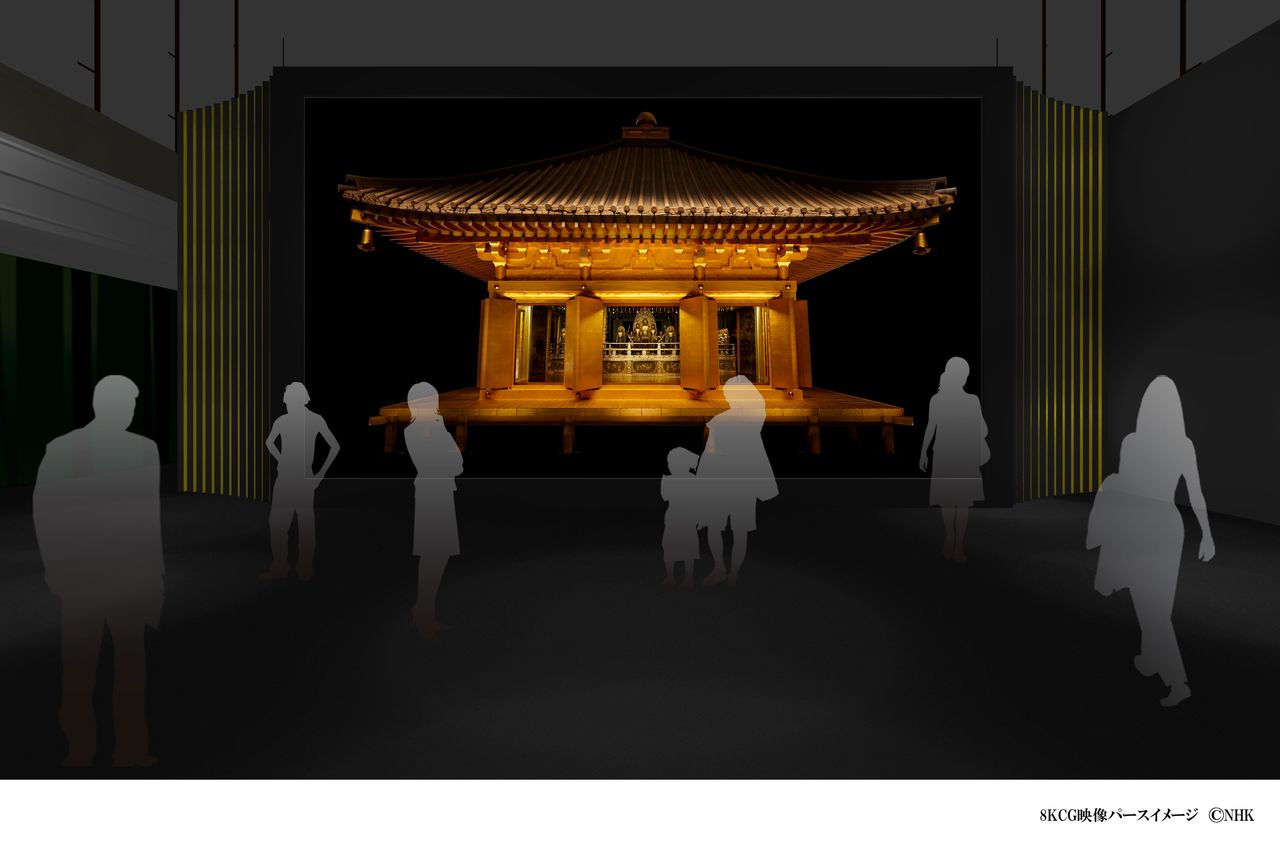Celebrating Nine Centuries of Chūsonji’s Golden Hall
Newsfrom Japan
History Art Culture Guide to Japan- English
- 日本語
- 简体字
- 繁體字
- Français
- Español
- العربية
- Русский
Revisiting the Glory of the Northern Fujiwara
The Golden Hall of the Buddhist temple Chūsonji, designated a National Treasure, was erected in 1124 by Fujiwara no Kiyohira, the leader of Mutsu Province’s powerful Ōshū Fujiwara clan. Kiyohira, of the Northern Fujiwara family of Kyoto, his son Motohira, and grandson Hidehira, led the blooming of a majestic culture in Hiraizumi (in what is now Iwate Prefecture) to rival the capital Kyoto, based on wealth obtained through gold mining.
The third-generation clan head, Hidehira, was known for offering protection to Minamoto no Yoshitsune, who had fled to Hiraizumi following conflict with his older brother and Kajiwara Kagetoki. But Yasuhira, who become clan head after the death of Hidehira, ignored his dying wishes by launching an attack on Yoshitsune, leading to his defeat and his own suicide. The Northern Fujiwara were subsequently driven to ruin by the mighty forces of Kagetoki, bring the century of splendor to a close.
Nevertheless, what remains is magnificent. The Golden Hall is considered one of the finest examples of Amidism (Pure Land Buddhism) architecture from the Heian period (794–1185) alongside the Phoenix Hall of Byōdōin in Uji, Kyoto, and is the oldest building standing in Japan’s northerly region of Tōhoku. In 1951, it became the first structure designated a Japanese National Treasure, and subsequently, over 3,000 items in Hiraizumi have been classified as National Treasures or Important Cultural Properties.
The dazzling hall is decorated with gold inside and out, and is adorned with mother-of-pearl lacquer decoration, creating an embodiment of Amitabha’s Pure Land in our world.
As well as conveying the splendor of the Northern Fujiwara, the Golden Hall is also the final resting place of its leaders. It is one of the five sites registered as UNESCO World Heritage in 2011 under the title Hiraizumi—Temples, Gardens and Archaeological Sites Representing the Buddhist Pure Land.

Chūsonji’s protective roof clad in winter snow. (Courtesy of Chūsonji)

Exterior of the Iwate temple’s Golden Hall, a National Treasure. (Courtesy of Chūsonji)
Precious Buddhist Images
The Golden Hall faces east. Inside, it has three shumidan (dais for Buddhist images), containing caskets holding the remains of the four great leaders of the Northern Fujiwara clan. It is believed that Fujiwara no Kiyohira’s casket is in the most important central dais.
An exhibition running through April 14, 2024, at the Tokyo National Museum displays the 11 Buddhist statues, all designated National Treasures, that are enshrined in the center of the Golden Hall (and pictured in the banner photo above). This is the first time that all of the statues have been exhibited together outside of the temple.
One of the statues depicts Amida, the Amitabha Buddha, seated with hands clasped in the Dhyana mudra, a symbol representing meditation, flanked by two standing bodhisattvas, Kannon (Avalokitesvara) and Daiseishi (Mahasthamaprapta). The three statues, coated in gold leaf inside and out, have distinctive plump cheeks, and peaceful, refined composures.
It is likely that they occupied the central dais since the temple was built. If the statues date back to temple’s construction by Kiyohira, they are on a par with those crafted by Kyoto’s master Buddhist image makers of that era, giving us insight into the high standard of culture attained in distant Hiraizumi.

The Amitabha Buddha and the two flanking bodhisattvas are Japanese National Treasures. (Courtesy of Chūsonji)
Jizō and the Two Heavenly Kings
Amida and the two bodhisattvas are accompanied by three standing statues of Jizō (the bodhisattva Kshitigarbha) on each side. This set of Jizō images is believed to represent the contemporary belief in praying for salvation from the endless circle of transmigration through the rokudō, or “six worlds,” into which beings are reincarnated based on karma linked to their actions in previous lives.
Also displayed are striking statues of Jikokuten (Dhrtarastra) and Zōjōten (Virudhaka), Buddhist deities depicted twisting at the waist with arms raised, in the characteristically dynamic Kamakura style. There are also Buddhist decorations engraved with motifs of Kalavinka, the imaginary singing bird in Amitabha’s Pure Land, with a human head and the body of a bird.

Statues of Virudhaka (left) and Dhrtarastra (right) are also National Treasures. (Courtesy of Chūsonji)
Digital Re-Creations of the Pure Land
The exhibition at the Tokyo National Museum features a faithful re-creation of the Golden Hall on display 4 meters high and 7 meters wide, using ultra-high definition 8K computer-generated graphics based on image data of the temple’s interior.

The museum’s image of the Iwate site. (© NHK)
This has been developed based on a digital archive developed by the broadcaster NHK in collaboration with the Tokyo National Museum that comprehensively captures the exterior, interior decoration, and Buddhist statues, displaying true-to-life copies of the actual objects. This is achieved through the projection of over 10,000 high-definition (9,504 × 6,336 pixel) static images. The three-dimensional CG images were created with photogrammetry technology, which uses photos taken from multiple angles. In addition, a 3D scanner was used to measure the Golden Hall and its Buddhist statues in order to create the most accurate representation possible of the actual forms.
Presently, the real Golden Hall in Iwate Prefecture can only be viewed through a glass panel. But through the power of new technology, this exhibition recreates the glory of this marvel, giving visitors close-up encounter with the Pure Land of Japan’s north.
(Originally published in Japanese. Reporting and text by Nippon.com. Banner photo: The central dais of the Golden Hall of Chūsonji Temple. Courtesy of Chūsonji.)